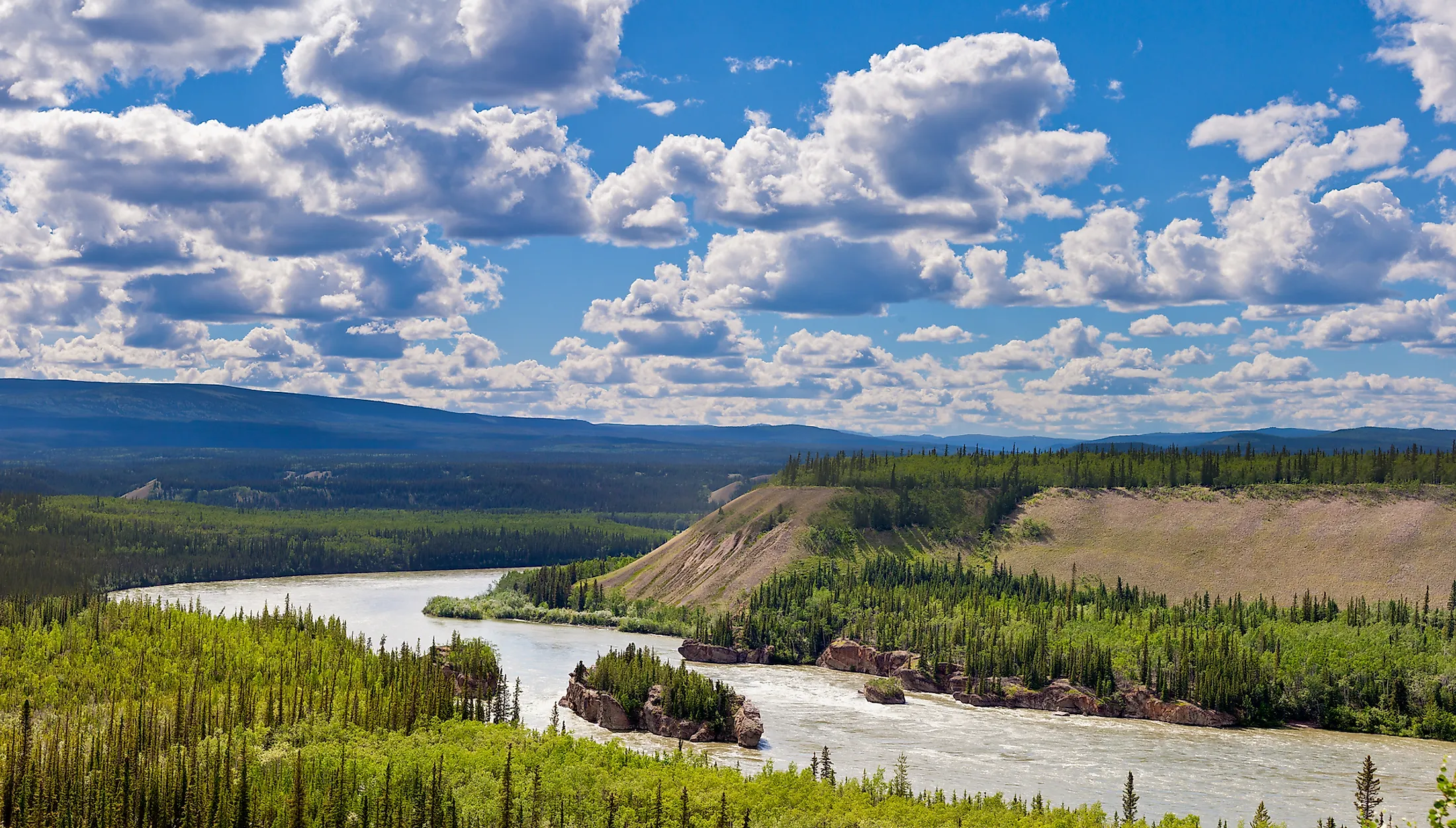
Yukon River
The Yukon River is the third-longest river in the United States and a major river in the northwestern part of North America. The 3,190km long Yukon River originates from its source in the Canadian province of British Columbia and then flows through the Canadian territory of Yukon. From there, the river flows westwards through the central portion of Alaska, United States, and finally empties into the Bering Sea. The Yukon River is considered the longest river in Yukon and Alaska and its drainage basin covers an area of about 833,000 sq. km that is shared between the United States and Canada.
Geography
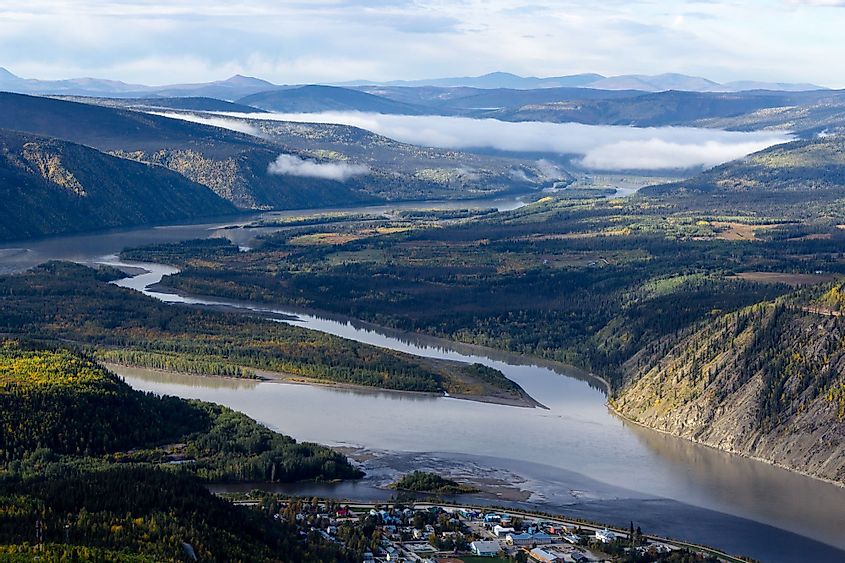
The Yukon River originates from the Llewellyn Glacier at the southern end of Atlin Lake in the Canadian province of British Columbia. Through the Atlin River, the Atlin Lake flows into the Tagish Lake, which then flows into the Marsh Lake via the Tagish River. The Yukon River proper, therefore, starts at the northern end of the Marsh Lake, just to the south of the city of Whitehorse in the Canadian Territory of Yukon. The lower half of the river flows in the westward direction through the central portion of the US State of Alaska. The Yukon River finally empties into the Bering Sea via the large Yukon-Kuskokwim Delta. Throughout its course, the Yukon River is joined by numerous tributaries such as White River, Takhini River, Porcupine River, Tanana River, Teslin River, Pelly River, Stewart River, Klondike River, etc.
Climate
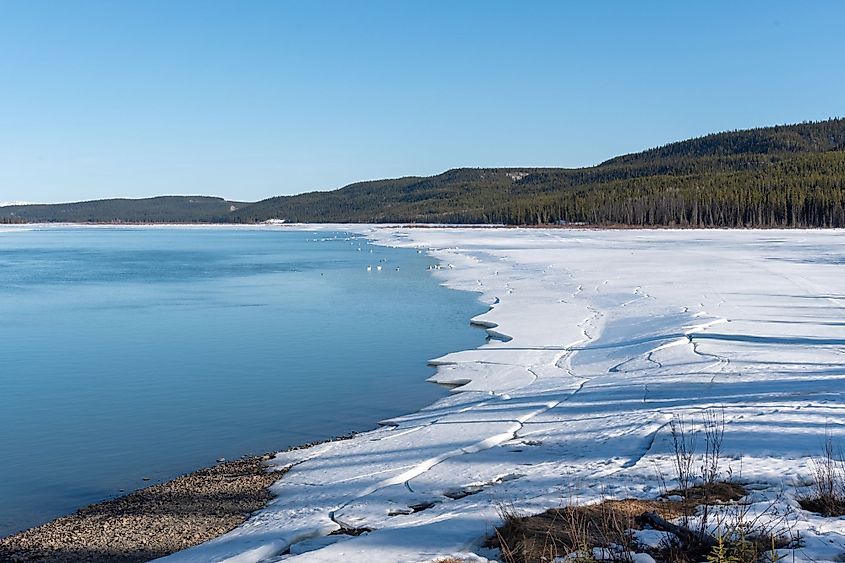
The valleys of the Yukon River Basin experience a subarctic climate, with relatively short and warm summers and long, bitterly cold winters. The average winter temperature at the city of Dawson on the banks of the Yukon River, is around -31°C, while the average summer temperature at Dawson is about 16°C. Rainfall in the region is largely restricted to the four summer months as precipitation in the rest of the year is in the form of snow.
Ecology
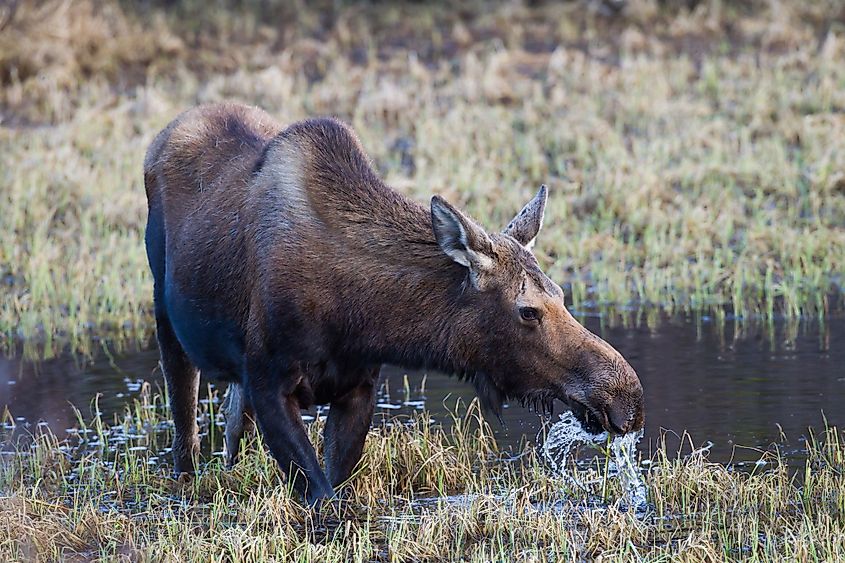
The valley floors and the lower mountain slopes of the Yukon River Basin are covered by coniferous forests. Dense forests of Alpine fir and lodgepole pine are found in the lower reaches of the river. The valley floors are dominated by white spruce while the poorly drained areas are covered by black spruce. Some of the notable mammals that are found here include grizzly bears, moose, deer, caribou, sheep, mountain goats, timber wolves, muskrats, martens, lynxes, minks, etc. Some of the significant avian species that are found here include swans, geese, ducks, ptarmigan, grouse, etc. The important fishes that are found in the Yukon River include salmon, pike, Arctic grayling, whitefish, and burbots.
The Yukon River hosts one of the longest salmon runs in the world, where every year the Coho, Chinook, and chum salmons migrate long distances along the river and its tributaries for spawning. The Yukon River salmon are considered a delicacy and are in high demand for their rich and oily meat. Subsistence fishing of salmon in the waters of the Yukon provides support to the local economy of the region. However, in recent years, there has been a drastic decline in salmon runs.
Brief History
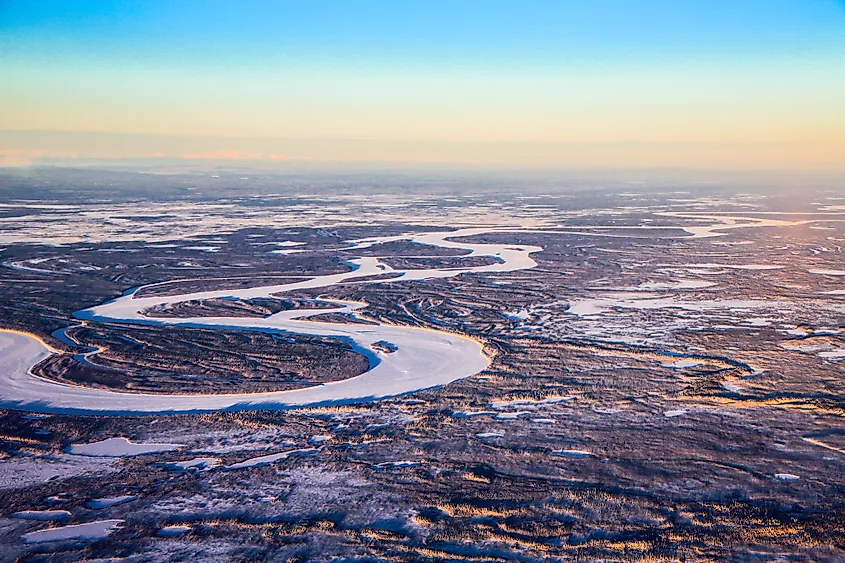
The Yukon River was extensively explored by the Russian explorers and fur traders in the 19th century. Initially, till the 1830s, only the Delta of the river was known to Russians, while the headwaters of the river were not known till the next decade. By 1846, the Russians had successfully mapped about 970km of the lower river. In 1848, a trading post was established at Fort Selkirk by Robert Campbell of the Hudson’s Bay Company. In 1851, he explored the downstream of the Yukon River till its confluence with the Porcupine River, where Fort Yukon had already been established in 1847. However, Fort Selkirk was burned by the native Indians in 1852 and the clashes between the native tribes and the Europeans gradually slowed down the pace of European exploration of the Yukon River Basin for the next few decades. In 1896, the Yukon River became widely known after the discovery of gold near the Klondike River, which is a tributary of the Yukon River. This discovery led to the speeding up of the navigation along the Yukon River and the subsequent Klondike Gold Rush. After World War I, the gold mining activity declined and the use of water transport on the Yukon River also decreased. In the 1950s, river transport in the Canadian part of the Yukon River lost much of its importance and was gradually replaced by road and air transport.











